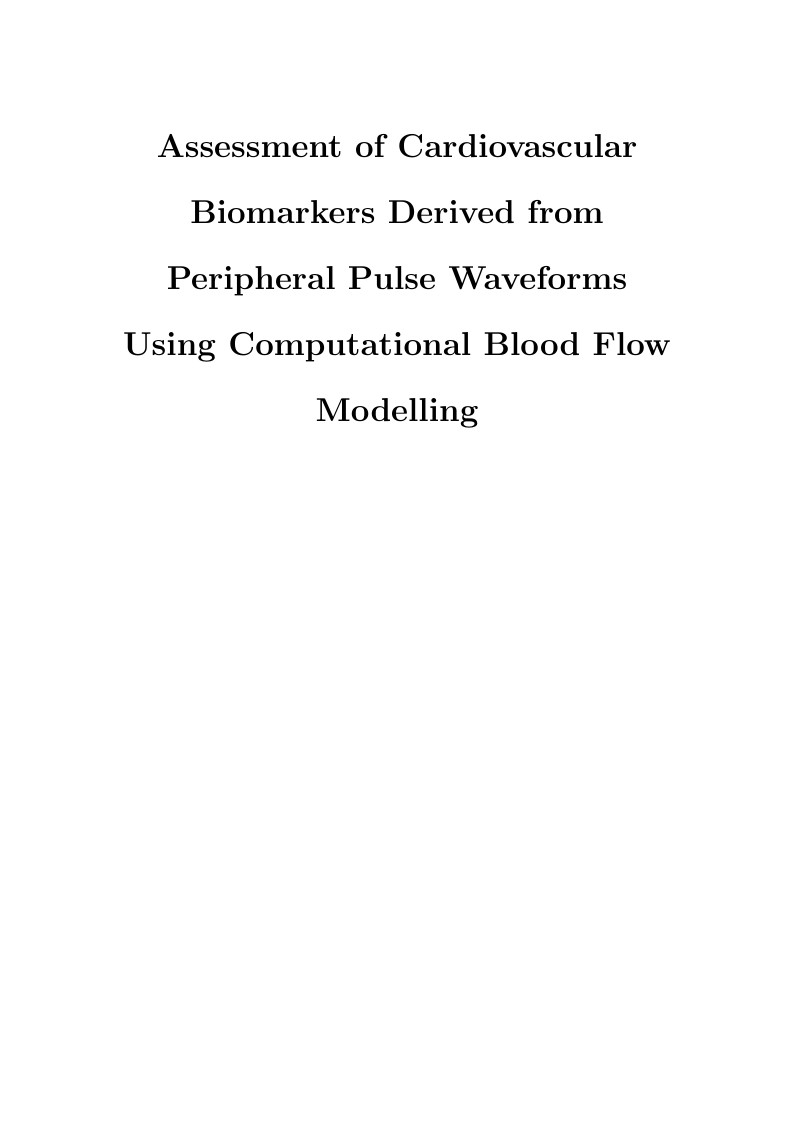
Assessment of Cardiovascular Biomarkers Derived from Peripheral Pulse Waveforms Using Computational Blood Flow Modelling
Author:
sally epstein
Last Updated:
9년 전
License:
Creative Commons CC BY 4.0
Abstract:
The aim of this thesis is to investigate the ability of cardiovascular biomarkers calculated from peripheral pulse waveforms to estimate central properties of the cardiovascular system (e.g. aortic stiffness) using nonlinear one-dimensional (1-D) modelling of pulse wave propagation in the arterial network. To test these biomarkers, I have produced novel 1-D models of pulse wave propagation under normal and pathological conditions. In the first part of my thesis, I extended the modelling capabilities of the existing 1-D/0-D code to represent arterial blood flow under diabetes, hypertension, and combined diabetes and hypertension. Cardiac and vascular parameters of the 1-D model were tailored to best match data available in the literature to produce generalised hypertensive, diabetic, and combined diabetic and hypertensive population models. Using these models, I have shown that the pulse waveform at the finger is strongly affected by the aortic flow wave and the muscular artery stiffness and diameter. Furthermore the peak to peak time measured from the pulse waveform at the finger can identify hypertensive from diabetic patients.
In the second part, I developed a new methodology for optimising the number of arterial segments in 1-D modelling required to simulate precisely the blood pressure and flow waveforms at an arbitrary arterial location. This is achieved by systematically lumping peripheral 1-D model branches into 0-D models that preserve the net resistance and total compliance of the original model. The methodology is important to simplify the computational domain while maintaining the precision of the numerical predictions — an important step to translate 1-D modelling to the clinic.
This thesis provides novel computational tools of blood flow modelling and waveform analysis for the design, development and testing of pulse wave biomarkers. These tools may help bridge the gap between clinical and computational approaches.

\begin
Discover why over 20 million people worldwide trust Overleaf with their work.